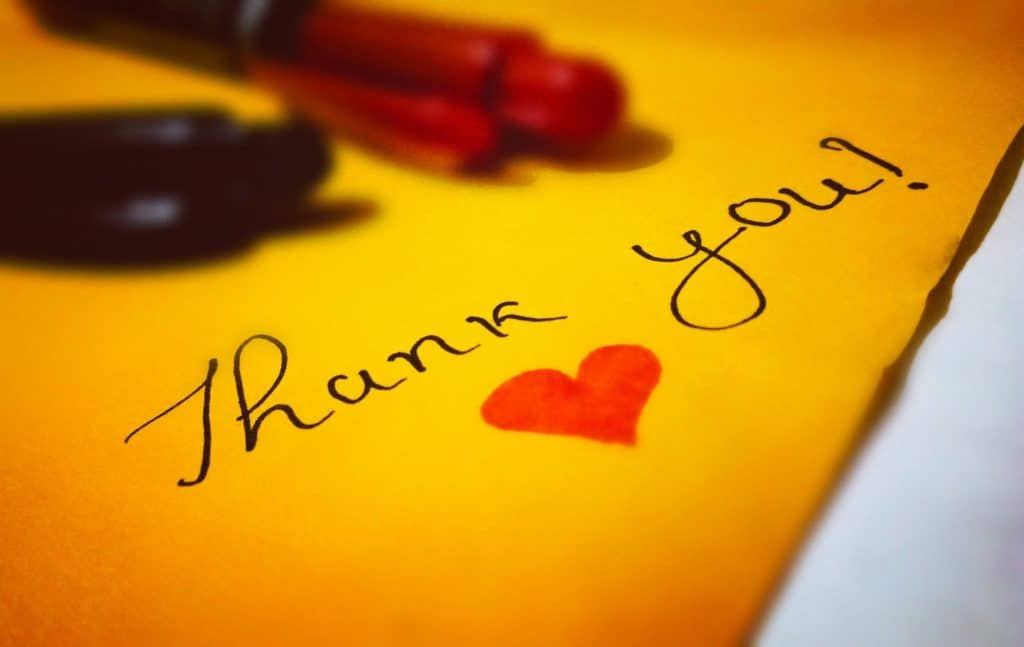
There’s nothing like a show of gratitude to cement the beginning of a beautiful relationship.
A genuine, honest recognition given to someone who has gone out of their way to help boost others up. In nonprofit work, extending a sincere message of gratitude is not only a nice gesture; it’s a required step in securing future funding.
Your message of thanks doesn’t have to be complicated. It doesn’t need to be filled with a highly charged emotional message that attempts to convey the importance their contribution makes to your nonprofit’s mission. It should be clear, concise, and sincere. Below is a breakdown of what you should and shouldn’t include to craft your best thank you letter yet.
What to Do
1. Make it a “Top Level” Communication
The first indicator of your donor’s importance is seen in the “From Name” of the email. Whether you are sending a personalized hand-crafted letter or a mass email, have it come from a top-level person within your organization. This underscores the donor’s value by putting them on the same level as your VIP. If your signatory is a recognizable name their influence may bring even more interest in your nonprofit.
2. Start Saying “Thank You” in the Subject Line
The subject line set up the expectations for what’s to come, so make it impactful by saying “thank you” and noting the campaign or reason they’ve donated right away. This will get the donor’s attention, spark their interest in opening the email, and let them know you recognize their contribution in the very first line of the message.
3. Address it Directly to the Donor
No one wants a form letter when receiving a thank you correspondence. When sending out a message to a group of people make sure it is set up to merge with your list of personal names as well as their addresses to give it a more personal touch.
4. The Donor as Team Member
Characterizing their support as an integral part of the nonprofit’s success will deepen the bond the donor feels with your nonprofit. Describe what the need is and how their contribution will be used to remedy it. Make them a member of the team that is solving the problems they care about most.
5. Add Interest to the Email
Images, graphs, quotes, videos, and other special features will grab their interest and turn your message into a quick read, without compromising the sincerity of your message. Make videos short (around two or three minutes), images colorful and clear, and quotes meaningful for the greatest impact.
What Not to Do
1. Procrastination is Bad Practice
Be as eager to get your message of gratitude off to the donor as you are to receive the gift. Nothing says you are grateful like an immediate response. Have a standard message ready for donations that come in unsolicited, with a space for a personalized greeting. For donations associated with a campaign, create one that specifically references their participation in that funding drive. Adding images from the event is a nice touch and generates more interest upon opening the email or letter.
2. Make Your English Teacher Proud
Show the donors you’re a professional with a message that is beyond reproach. Check spelling, grammar, and tone before sending it out. It’s good practice to find a second perfectionist to have another look at your correspondence before hitting send.
3. Form Letters Fail
While you must stick to the standard style of letter writing with an opening that summarizes the content, a body containing details, and a concluding summary with a call to action, using a formula to convey your message will make it easier to ignore. Choose language that will excite your reader or convey a message that will illustrate the need without overwhelming them with emotion.
4. Boring Your Reader
Don’t forget the flash! To make your thank you letter memorable it is important to add a dash of spice to liven it up. Mix it up with graphics and formatting that creates a style that is uniquely associated with your nonprofit.
You can choose images, video, a quote from someone notable, or information that will really make an impact.
Sending a thank you that will convey gratitude and underscore the importance of your mission will set your donors up to readily give more contributions in the future. Using these guidelines will put you on the right path to a better letter that you can feel confident will get that relationship off on great footing.

Wonderful ideas! We should always make an extra effort when sending someone especially donors a “thank you” letter. Great post Dena!
Exactly, thanks for appreciating the post. Glad you like it, Happy Fundraising!